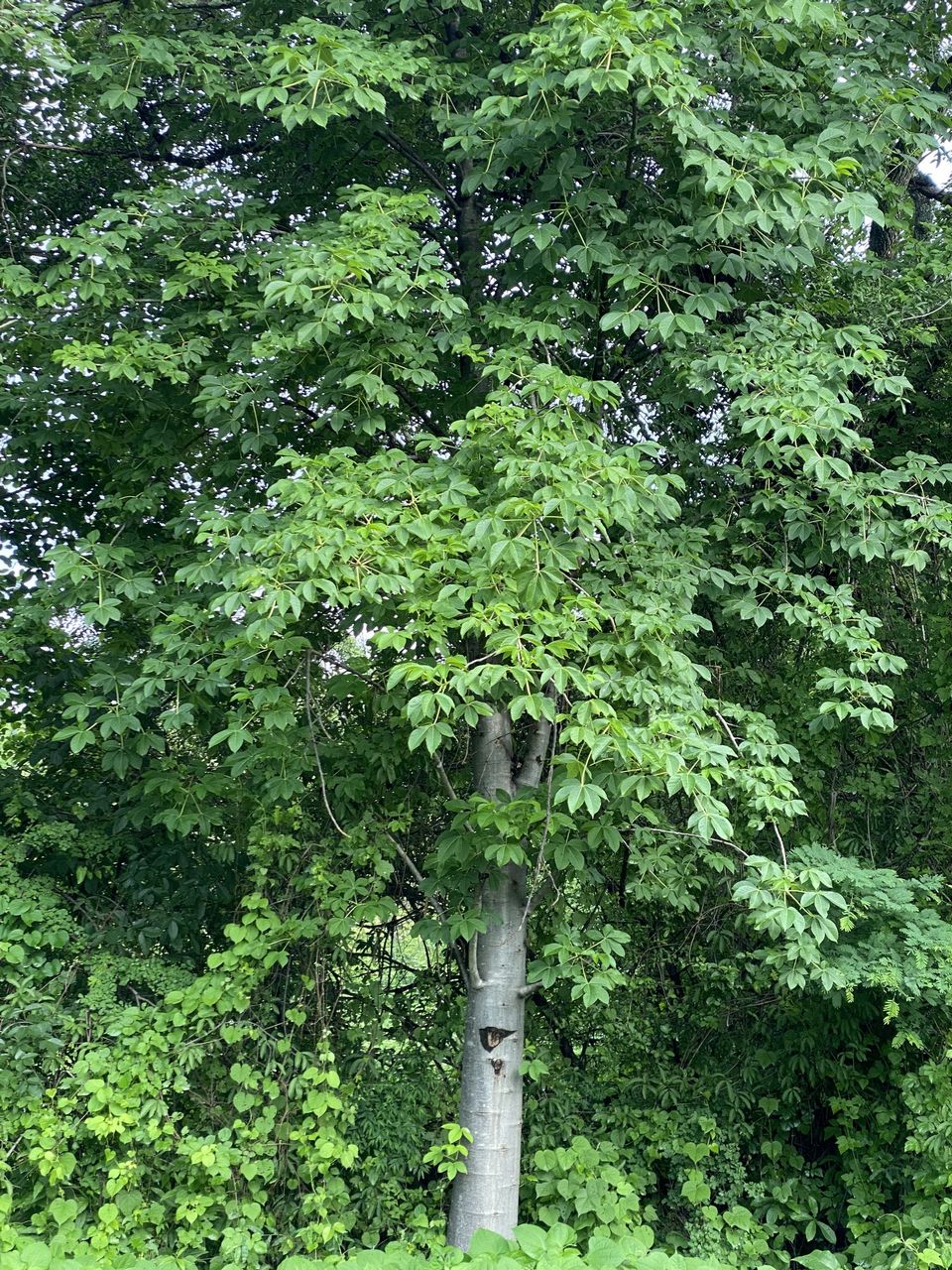Jacaratia mexicana 18713
Author: Alphonse Pyrame de Candolle (1806-1893)Family: Caricaceae
Genus: Jacaratia
English name: Bonete
Zone: California
Description
This species is from Central America, Nicaragua to Mexico. It grows in moist or dry lowland forest or scrub, at elevations below 800m. It occurs on arid hills in El Salvador.

Jacaratia mexicana Observed in Mexico by pablottorres97 (license)
Botanical Description
Jacaratia mexicana is a deciduous shrub or small tree growing from 5-12m tall, with occasional specimens growing taller. The bole is very thick at the base, tapering upwards and dividing into a few heavy branches.
The obovoid fruit is 4-15cm long, or perhaps even longer, and 8-10cm wide. The seeds are many and large, often filling the single-celled or falsely 5-celled cavity.
Edible plant
The fruit can be eaten raw or cooked. The reddish-yellow flesh has a sweet flavor. They can be eaten in salads, cooked, or can be made into sweetmeats of various kinds. A kind of tortilla is made using the starch of the trunk. It is said that when maize is scarce the Mayas of Yucatan pulverize the pith of the plant and mix it with maize in making tortillas, although this seems unlikely.
References
- Useful Tropical Plants. Jacaratia mexicana
The obovoid fruit is 4-15cm long, or perhaps even longer, and 8-10cm wide. The seeds are many and large, often filling the single-celled or falsely 5-celled cavity.
Edible plant
The fruit can be eaten raw or cooked. The reddish-yellow flesh has a sweet flavor. They can be eaten in salads, cooked, or can be made into sweetmeats of various kinds. A kind of tortilla is made using the starch of the trunk. It is said that when maize is scarce the Mayas of Yucatan pulverize the pith of the plant and mix it with maize in making tortillas, although this seems unlikely.
References
- Useful Tropical Plants. Jacaratia mexicana
General specifications
Biological type: tree
Frost resistance: 23ºF
Leaf color: dark green
Flower color: yellow
IUCN Red List of threatened species status: Least Concern
Specifications for the Mediterranean basin
Adult size (h x w): 49,2ft x 32,8ft
Sun exposure: full sun (Sun hours: >6h Foliage: deciduous
Growth: fast
Flowering time from March until April
Specific information for our garden
Planting substrate: 30%Compost+30%Coco+40%Sand
Plant watering: 3x a week pH 6.5
Logical sequence of containers for: Trees; forestry plate, forestry pot 3L, container 6L, container 55L, container 110L, container 240L
Propagation is done by cuttings
Ecology in its country of origin
Rainfall: 1000-2000mm
Frost resistance: 23ºF
Leaf color: dark green
Flower color: yellow
IUCN Red List of threatened species status: Least Concern
Specifications for the Mediterranean basin
Adult size (h x w): 49,2ft x 32,8ft
Sun exposure: full sun (Sun hours: >6h Foliage: deciduous
Growth: fast
Flowering time from March until April
Specific information for our garden
Planting substrate: 30%Compost+30%Coco+40%Sand
Plant watering: 3x a week pH 6.5
Logical sequence of containers for: Trees; forestry plate, forestry pot 3L, container 6L, container 55L, container 110L, container 240L
Propagation is done by cuttings
Ecology in its country of origin
Rainfall: 1000-2000mm
Sowing instructions
SPRING Clean to pure seeds. Soak the seeds in warm water of 104°F for 12h. Sow the seeds at 2mm depth in the Well Drained Seed Sowing Mix between 68-77°F. During germination keep the substrate moist and in daylight. The results are erratic.
The average seed weight is 20,8 per gram (0,048182g).
Germination references
- Survival and growth of Jacaratia mexicana seedlings inoculated with arbuscular mycorrhizal fungi in a tropical dry forest, Zulueta-Rodrìguez, Ramón and Hernandez-Montiel, Luis G and Murillo-Amador, Bernardo and Códoba-Matson, Miguel V and Lara, Liliana and Alemán Chávez, Isabel. Madera y bosques 2015 Vol. 21(3) pag. 161-167. Address
The average seed weight is 20,8 per gram (0,048182g).
Germination references
- Survival and growth of Jacaratia mexicana seedlings inoculated with arbuscular mycorrhizal fungi in a tropical dry forest, Zulueta-Rodrìguez, Ramón and Hernandez-Montiel, Luis G and Murillo-Amador, Bernardo and Códoba-Matson, Miguel V and Lara, Liliana and Alemán Chávez, Isabel. Madera y bosques 2015 Vol. 21(3) pag. 161-167. Address
Experiences in the garden
12-10-20A Obtaining seeds from seed provider Rare Palm Seeds. Stock
19-05-21 Sown 20 seeds in a seed plate F, they did not geminate.
Protocol: Spring 2mm Sowing mix+Sand 68-77°F Marsh
22-05-24 Sown 20 seeds in a seed plate F, they did not geminate in Serre3.
Protocol: Spring Soak 104°F 24h 2mm Sowing mix+Sand 68-77°F Damp substrate+Light
26-05-25 Sown 40 seeds in a seed plate F in Serre3.
Protocol: Spring Clean Soak 104°F 12h 2mm Sowing mix+Sand 68-77°F Damp substrate+Light E